Madagascar vanilla beans are sold under several grades and names. This article will review the meaning of these vanilla bean terms and how to purchase the best vanilla beans for your use.
Regional/Varietal Designations
Planifolia:
There are two edible botanical varieties of vanilla beans. The most prevalent is called Vanilla planifolia. This variety has a French vanilla flavor: creamy, rich, warm, and high in vanillin (the most prevalent flavor contained in a vanilla bean). The second variety is Vanilla tahitensis or Tahitian-style vanilla. This vanilla contains many more anise-like flavorings that impart a spicy or floral characteristic. See this blog for more information on these two varieties. See this blog for more information on regional differences.
Bourbon:
Bourbon is a term that is applied to Planifolia vanilla and usually refers to vanilla that comes from the French Bourbon Islands. These islands include Mauritius, Madagascar, and La Reunion. The name Bourbon refers to the French royal Bourbon family. The Bourbon kings colonized the islands in the 17th and 18th centuries. Bourbon vanilla is not in any way associated with bourbon whiskey. This term is falling out of fashion due to the confusion between the liquor and the vanilla bean.
Madagascar:
Vanilla beans sold as Madagascar vanilla beans are simply vanilla beans that were grown and cured in Madagascar. Madagascar vanilla beans are also Bourbon and Planifolia vanilla beans. Madagascar produces the world’s finest vanilla beans due to the rich tradition of growing and curing vanilla that exists in the country. Madagascar’s generational knowledge of the vanilla crop translates into vanilla beans with higher flavor content and less likely to mold. Other tropical countries around the world can certainly produce excellent vanilla beans, but when in doubt, we always recommend Madagascar vanilla beans.
Tahitian-Style:
Tahitian vanilla beans can be grown in either Papua New Guinea or Tahiti. This variety of vanilla beans has a different Flavor characteristic. It is often described as floral, spicy, or anise-y. Tahitian vanilla beans pair particularly well with tropical fruits.
Vanilla Bean Properties:
Moisture Content:
The moisture content in vanilla beans is a crucial physical property. Good vanilla beans range in moisture content between 20% and 35% water. Vanilla beans should be flexible and pliable. Vanilla beans that are too dry are often referred to as sticks. These vanilla beans usually contain very little flavor are aroma and are only useful for hot, industrial extraction. Vanilla beans that are too wet are very susceptible to mold. Furthermore, these vanilla beans are often picked too early which means they have little flavor.
Vanillin Content:
The most important quality of vanilla beans is their vanillin content. (For more on vanillin read this blog.) Vanillin is the single highest flavor component in vanilla beans. Good vanilla beans range in vanillin percentage between 0.75% and 1.5% weight per weight. Vanillin content differs from bean to bean and depends on harvest time, and curing techniques.
Length:
Length is a significant physical quality of the vanilla bean. Most of the flavor content in the vanilla bean occurs in the bottom 2/3 of the vanilla bean. Thus, the longer the vanilla bean, the more flavor it will have. Good vanilla beans range between five inches and eight inches.
Color:
Good vanilla beans range in color from medium brown to black. Beware of vanilla beans that are too black, as they may have been oiled with vegetable oil other oils. Vanilla beans that are light brown are usually too dry.
Oiliness:
Vanilla beans should have a slight oily residue which leaves an amber-colored and extremely fragrant residue on your hands. Beware of overly oily vanilla beans, oiliness that is either clear or black, or oil that is either free of aroma or has a poor aroma. All of this can be a sign of some type of oil being applied to the bean.
When purchasing vanilla beans in quantities over 10 beans, always buy by weight. Vanilla beans vary a lot in length and individual weight and the beans. Often sellers will sell short beans by number and thus are selling inferior quality vanilla beans.





Vanilla Bean Terms
Vanilla beans are sold are various moisture contents and as either split or non-split (fondue or non-fondue).
Split (Fondue):
Split (fondue in French) vanilla beans are vanilla beans that have split just slightly at the tip of the vanilla bean pod. This can be between one centimeter and one-inch split. Split vanilla beans are picked at peak ripeness and thus have the best flavor and aroma. Vanilla beans are a type of fruit, meaning that they serve the biological need of the plant to spread its seeds. At peak ripeness, the vanilla pod splits open so that the seeds contained in the pod can fall to the ground, get caught in the wind, or be eaten by animals, including birds and monkeys, or insects. At this point, the fruit is the most flavorful because the aroma and taste attract the animals and induce the animals to eat the fruit, to spread the seeds across a wider area.
Non-Split (Non-Fondue):
Non-split (non-fondue in French) vanilla beans are vanilla beans that are picked before the vanilla bean pod splits open on the vine. These vanilla beans can still have a great flavor profile if picked when the tip is yellow.
Gourmet Vanilla Beans:
Gourmet vanilla beans have a higher moisture content (usually between 30% and 35%). This makes these vanilla beans more suitable for splitting. As chefs are the target market for these types of vanilla beans, they are called “gourmet.” It should be noted, however, that these are not necessarily the highest quality or best-flavored vanilla beans. Indeed, vanilla beans with higher moisture content are much more susceptible to mold. Gourmet vanilla beans are always non-split vanilla beans.
Extract-Grade Vanilla Beans:
These vanilla beans have a much lower moisture percentage than gourmet vanilla beans. They range between 22% and 27% moisture. As the name suggests, these vanilla beans are the best to use for cold-press, or traditional, extraction. This includes home extraction. Typically, they have a greater flavor and aroma than other grades due to longer time in the sun, which results in a higher vanillin content. Extract vanilla beans can be either split or non-split.
Grades
Grading terms are typically only used by Westerners and can refer to different physical attributes of the vanilla bean.
Grade A:
Grade A vanilla beans either refers to Gourmet vanilla beans (high moisture, non-split) or vanilla beans that are five inches or longer.
Grade B:
Grade B vanilla beans either refer to extract-grade vanilla beans or vanilla beans shorter than five inches.
Loose Vanilla Beans:
Good vanilla beans from Madagascar are always shipped from Madagascar in bundles. Some beans are exported as loose vanilla beans. Loose vanilla beans typically are lower in quality. These can be vanilla beans that are split too much (more than one and a half inches) or vanilla beans that are short in length.
Cuts:
Cuts are vanilla bean scraps. They can literally be cut, meaning that some part of the bean molded and was cut off, or they can be extremely short and/or gummy. Vanilla beans come off of the vine in bunches similar to a banana. On some bunches, there are vanilla beans that are small and gummy. These beans are not good and can contaminate other vanilla beans in the curing process with gumminess and mold.










Vanilla Bean Types and Labels:
US Red Spits:
These vanilla beans are of excellent quality. Because they are split, they have a high vanillin content and are packed with flavor. They have a characteristic reddish-brown color. These are the vanilla beans that we use in our pure vanilla extract. The moisture content is 22-23%. These vanilla beans are best used for traditional, cold-press extraction, including home extraction.
Euro Red Splits:
Similar to US Red Splits, these are flavor-packed split-vanilla beans. The Euro version is slightly higher in moisture content at 24-25%.
US Non-Splits:
These are non-split extraction grade vanilla beans with a slightly higher moisture percentage at 22-24% moisture. They also have a reddish-brown color, though they do not have the same intense flavor as the splits.
Euro Non-Splits:
These are non-spilt extraction vanilla beans. These have the highest moisture content of all of the red varieties at 25-26%. They are reddish-brown in color. These also are not as flavorful as the split vanilla beans.
TK:
These vanilla beans are black in color and have a moderately high moisture percentage at 29-32%. These are good all-purpose vanilla beans and can be used in extraction or for gourmet uses. They can be either split or non-split.
Gourmet:
These are by far the wettest of the vanilla beans and come in at 33-35% moisture. They are flexible are therefore excellent for splitting with a knife. These are black, long, and have a moderate amount of flavor and aroma.
A final note on purchasing vanilla beans.
When purchasing vanilla beans in quantities over 10 beans, always buy by weight. Vanilla beans vary a lot in length and individual weight and the beans. Often sellers will sell short beans by number and thus are selling inferior quality vanilla beans.
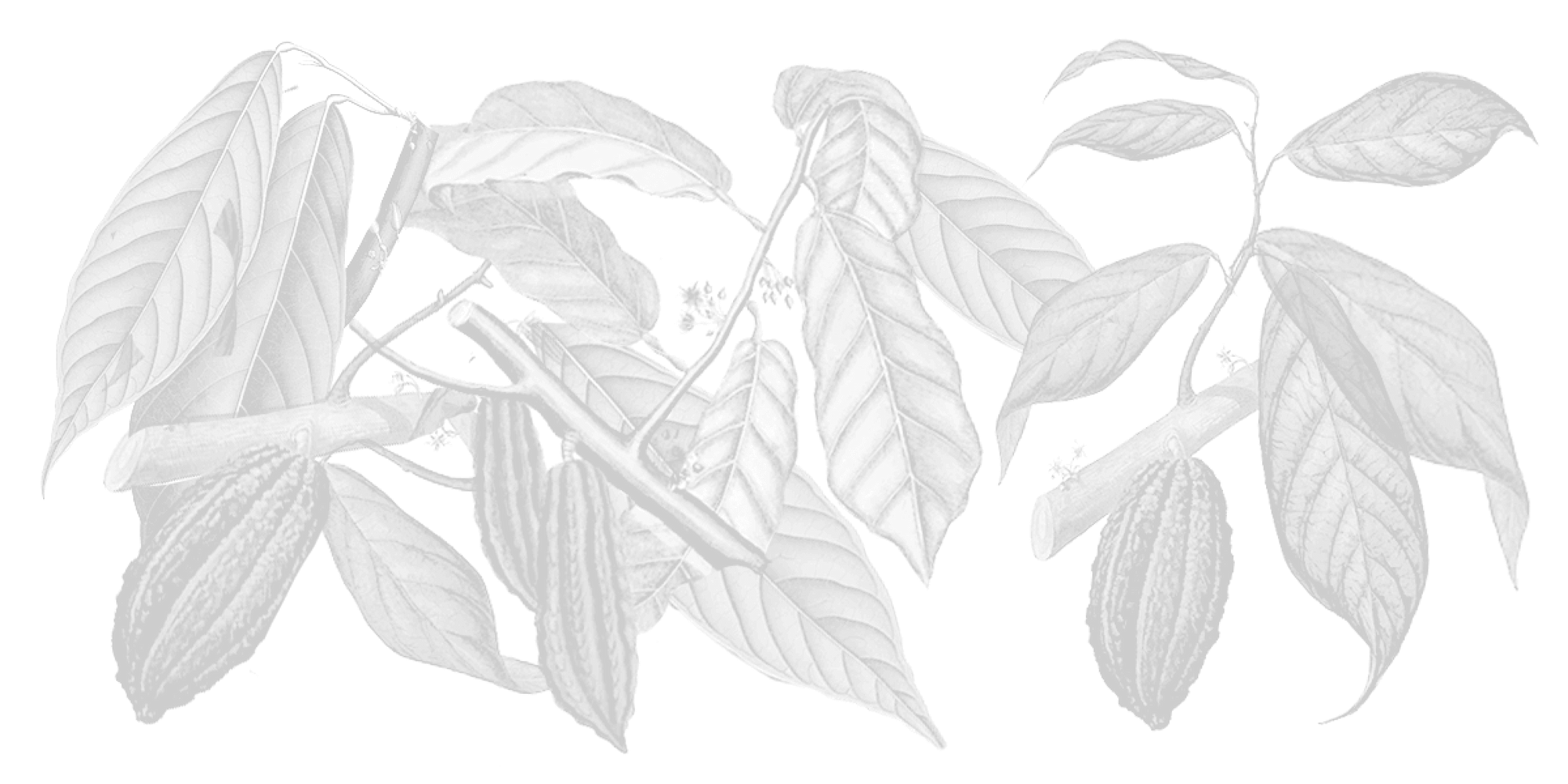
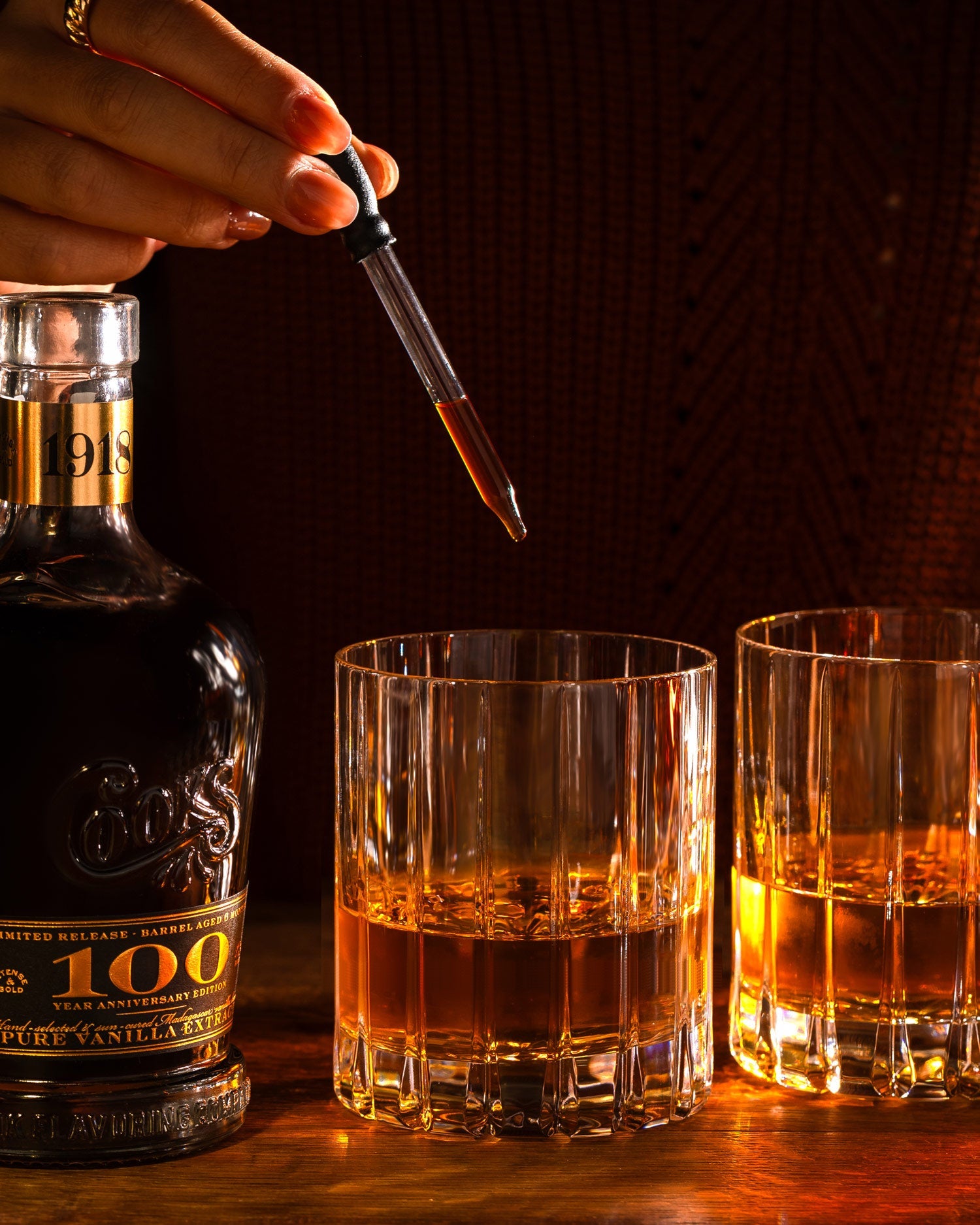

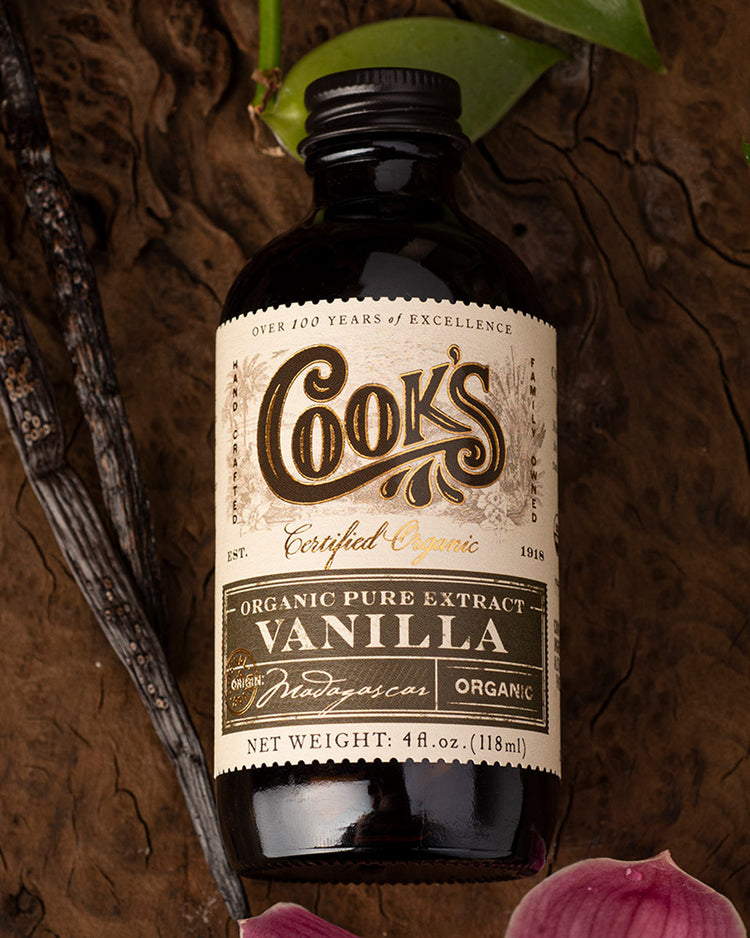
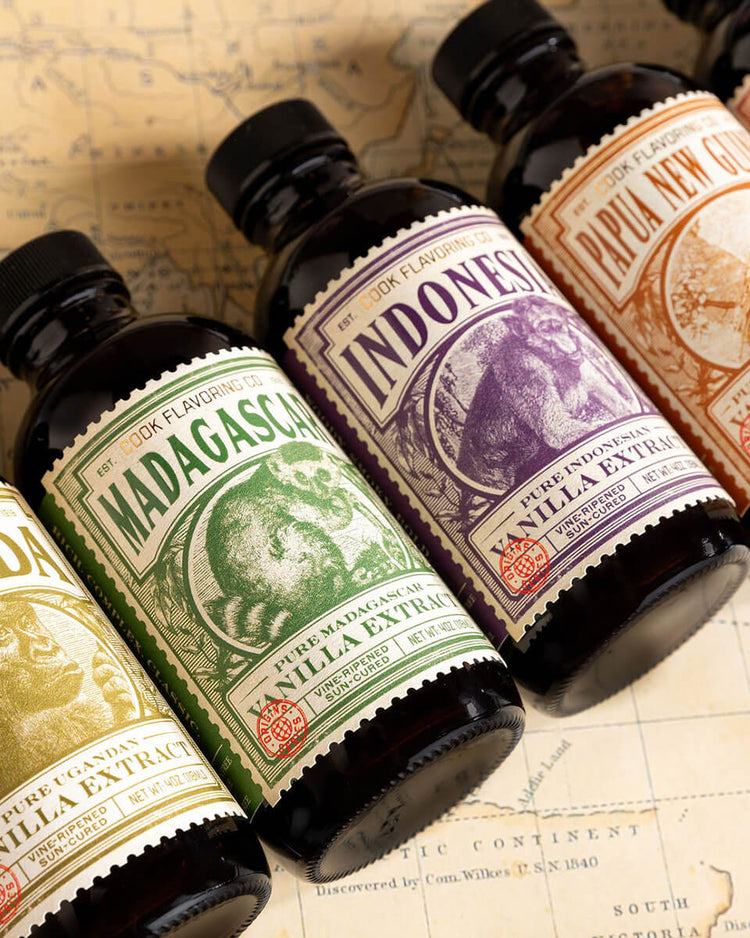


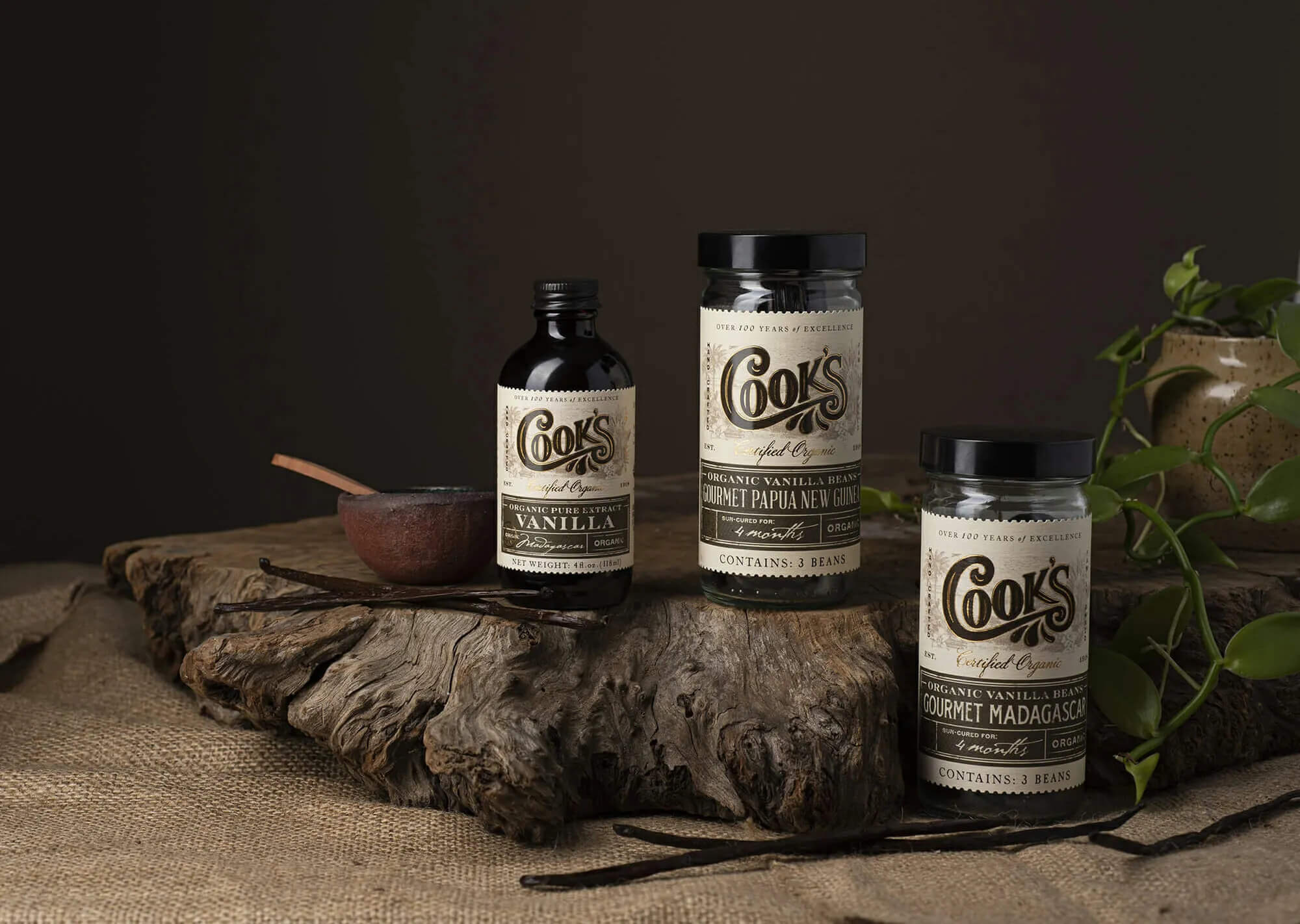
Comments